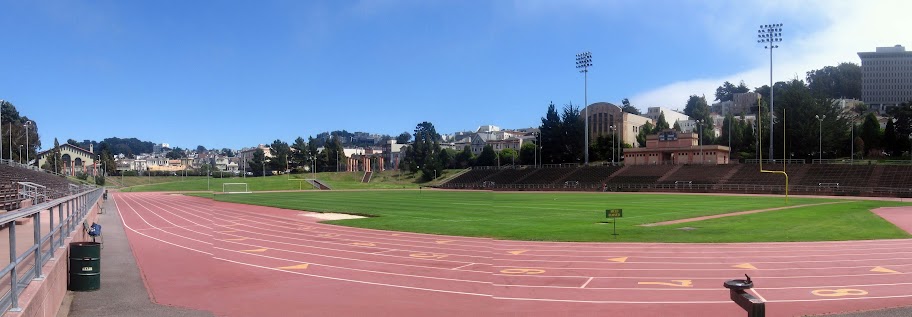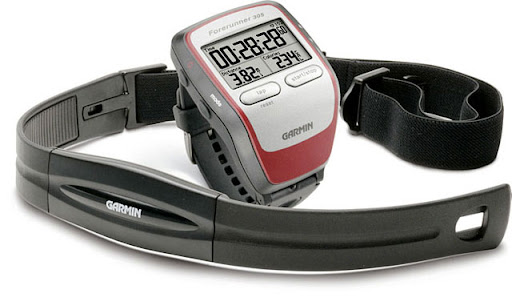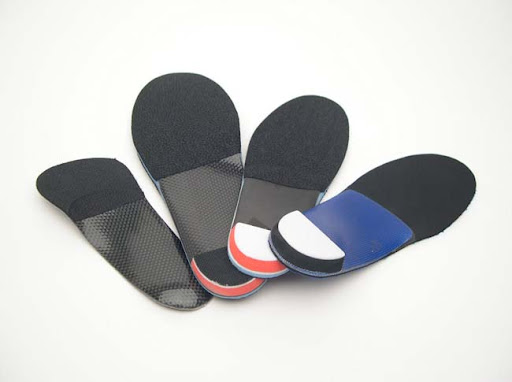You may now be expecting me to commence venting about said shitty run, to get it off my chest and make me feel better. Well, you couldn't be more wrong.
Why am I not venting?
Because it doesn't work. And let me tell you why it doesn't work. Because we make our own feelings with our words, actions, body language, physical responses, etc. Your heart rate doesn't go up and your face scowl because you're upset; your brain DECIDES you're upset because your heart rate went up and your face is scowling. Want to feel happy? The best thing you can do is look and act happy. Want to ensure you continue feeling bad about something? Keep scowling & rehashing it to people.
And before you're all like, "Oh, but it makes ME feel better to vent," no it doesn't. You feel better in the short term because the passage of time generally makes EVERYONE feel better in the short term. In the long term, venting = just as pissed.
It is known.
Let me tell you about my shitty run. Not to vent; just to provide you with the facts.
I had a speed workout scheduled -- a 2 mile warm-up, followed by 6 x 800 m at 10K pace with 400 m recovery jogs. It was warm and sunny outside at home, so I threw on a T-shirt and shorts, then drove to the track, ready for a great run. In that part of town, however, it was cold, cloudy, and windy, and I immediately wished I'd brought my sweatshirt to warm up in.
It turned out the track was closed because of a soccer game, so I had to run on the big, upper asphalt track, which is uneven and has two small hills. I jogged half a mile, then did my dynamic warm-up, then took off on my first interval. About halfway through I realized that I'd randomly skipped 75% of my warm up (probably distracted by my annoyance at the track being closed), so I stopped and jogged another 1.5 miles. Halfway through, both my shin splints & Achilles tendons started acting up. I started having foot pain as well, which never happens, and mild chest pains, which I've been having on and off for about a week and a half now. Towards the end of the 1.5 miles, I started having weird stomach cramps as well, which also never happens to me.
When I finished warming up, I had to sit down until the cramping stopped. After that I took off on my first 800 interval. I had a really tough time getting up to 10K pace and felt like it was taking me 3K effort to run half marathon pace. Then my Garmin started fluctuating wildly between 6:45 and 7:45 per mile, which didn't help. Also, the wind was extra bad on the back stretch, so I really didn't have any idea how close I was to the right pace / effort level at that point. My lower leg and foot pain continued throughout all this, as did my chest pains.
I got through the first interval (pace indeterminate); the chest pain lessened during my 400 recovery jog but the leg and foot pain didn't. During the 2nd interval, I had an even tougher time getting up to speed but forced my legs to do it anyway, gasping for breathe and cursing the wind the entire time. Well, this is going to suck, I was thinking by then, but I'm pretty sure I can still bust it out, and then at least it'll be done. About halfway through the second interval, though, I felt a sharper pain in my chest. That was the final straw; I didn't know what it was, but running faster seemed to be making it worse, and on the off chance that it was anything even remotely serious, I decided it wasn't worth pushing through the rest of the intervals. I finished the last 400 jog, then packed up and went home (fuming a little).
I think I've mentioned before how weak and defeated a failed run makes me feel. Back in the day, such a run could have very likely ended in some combination of snarling, snapping, throwing things around, slamming doors, collapsing & refusing to move, and, yes, even sobbing. But that was then and this is now and I am an emotionally stable(ish) grown-up and refuse to partake in that shit.
Well, most of that shit. Instead of sobbing and hitting things, I ate of piece of leftover tres leches cake, then moped on the couch for a while and watched a couple of hours of mindless TV. Then I showered and ate some leftover Indian food, then had another piece of cake. Don came home from a trip to the liquor store to pick up some things he'd ordered; I started free-styling with spirits and downing the results. Then I stopped mixing and did a few shots of barrel-aged gin. After that I stuffed myself with Chinese food and am now moping on the couch again with another healthy glassful of gin (I swear I'm not drunk. Yet).
So there's some mild wallowing going on. It's controlled, though, and there's a time limit; tonight is tonight and tomorrow is something different. Venting doesn't work; here's what *actually* makes people feel better when something crappy has happened to them.
- Identifying the root causes of the situation when possible, and making a plan for dealing with them. I did just race on Saturday, and in spite of the fact that I like to tell myself a 10K isn't a "real" race, the fact is that I pushed my body really hard and I'm probably not fully recovered yet. Most of the physical issues are most likely due to that. (I had a pretty shitty run two days after my 3rd place finish at Pride Run as well.) The best thing to do is probably to attempt all my regularly-scheduled runs this week but pay close attention to my body in case I need to shorten or back off on any of them. For all that I forget it sometimes, that's not terribly strange for the week after a short, hard race. Also, I'll bring my sweatshirt next time; honestly, I know better than to predict the weather somewhere in SF by the weather in a different part of SF three miles away.
- Letting it go when the causes can't be found, or were unpredictable / unavoidable. So the track was closed. So the weather was bad. So my Garmin was wonky. Stuff like that is about as avoidable as death and taxes. Let it go. I don't know what was up with the chest pains and stomach cramps; the best I can do is take things a little bit easier in the next couple of days and see if they get worse (or fail to get better). Until then, no use worrying about it.
- Reframing the situation in a positive light / finding the good in it. Owing to the fact that I raced hard on Saturday, I preemptively shortened Monday's run from 6 easy to 4; there's no reason why I shouldn't have done the same for Tuesday, or moved the speed work to later in the week. It's actually probably for the best that didn't finish this one and instead did more of a "reverse taper" kind of speed workout. Trying to finish the whole thing likely would have made the pain in my legs and feet a lot worse, too.
- Identifying any lasting effects of the situation, making a plan for dealing with them, if possible, and letting it go if not. I am now about three miles short on mileage for the week; tomorrow is a scheduled rest day, but if I feel alright tomorrow, I might do an easy three, just to make that up (though I won't attempt to make up the 800 intervals).
- Thinking optimistically about the future. Bad days happen. Thankfully, they're reasonably rare. I've had shitty days before and they've all given way to good ones, usually fairly quickly. This is also a good spot to pull out my favorite Greg McMillen quote: “The most successful athletes don’t dwell on the bad days; instead, they’re eager to move on to the next day’s training or upcoming race. Successful runners know that bad days don’t last and aren’t a true indication of their fitness. Bad days are just a freak occurrence that must be tolerated on the path to your goals.” That one's gotten me through a lot of bad days.
- Laughing it off. Kind of a ridiculous day, no? Seriously; I can't make this stuff up.

So yeah. I may still engage in some low-key wallowing when I have a bad day, but the difference is that I don't expect that to make me feel better, and I know what does make me feel better. I'll put my big girl panties back on in the morning; until then, no venting.
 This is my weekly training journal. Including it in the blog gives me a little extra accountability in the mileage department & helps me stick to my schedule. :)
This is my weekly training journal. Including it in the blog gives me a little extra accountability in the mileage department & helps me stick to my schedule. :)




 Take maintenance on my car, for example. I have a very special six-year relationship with the Pep Boys in San Carlos, and don’t think for a moment that just because I moved 30 miles away that I’m about to go through the torturous process of finding a new auto mechanic in the city. (It does help that my car only requires service every 10,000 miles, and that since moving to SF, I only drive it about 20 miles a week.)
Take maintenance on my car, for example. I have a very special six-year relationship with the Pep Boys in San Carlos, and don’t think for a moment that just because I moved 30 miles away that I’m about to go through the torturous process of finding a new auto mechanic in the city. (It does help that my car only requires service every 10,000 miles, and that since moving to SF, I only drive it about 20 miles a week.)

 About two years ago, I started running with a heart rate monitor all the time. Being a mathematician in addition to a runner, I couldn't get enough of the data end of things -- I had a whole Excel workbook going where I tracked the date, my pace, my average heart rate, as well as the temperature and any pertinent notes about the run. It was fascinating to see how different variables affected my pace, and neat to watch my average heart rate drop for the same run over time.
About two years ago, I started running with a heart rate monitor all the time. Being a mathematician in addition to a runner, I couldn't get enough of the data end of things -- I had a whole Excel workbook going where I tracked the date, my pace, my average heart rate, as well as the temperature and any pertinent notes about the run. It was fascinating to see how different variables affected my pace, and neat to watch my average heart rate drop for the same run over time. I started out with a
I started out with a  Due to mild pronation, I've run in a stability shoe for as long as I've been getting my shoes professionally fitted. That was towards the beginning of college; before that I honestly can't say what type of shoe I was running in, because my basic approach was to try on a bunch of running shoes until I found ones that felt comfortable. Then there was the one year we couldn't afford shoes and my coach gave me a pair to wear for the season, which I think were actually used and already worn out. Given all that, it's probably not surprising that I suffered from horrendous shin splints for years that all manner of leg and foot exercises did nothing to fix. Around the same time that I started wearing a stability shoe, I also started trying to switch to a forefoot strike; between these two things, my shin splints all but disappeared in a few months.
Due to mild pronation, I've run in a stability shoe for as long as I've been getting my shoes professionally fitted. That was towards the beginning of college; before that I honestly can't say what type of shoe I was running in, because my basic approach was to try on a bunch of running shoes until I found ones that felt comfortable. Then there was the one year we couldn't afford shoes and my coach gave me a pair to wear for the season, which I think were actually used and already worn out. Given all that, it's probably not surprising that I suffered from horrendous shin splints for years that all manner of leg and foot exercises did nothing to fix. Around the same time that I started wearing a stability shoe, I also started trying to switch to a forefoot strike; between these two things, my shin splints all but disappeared in a few months.